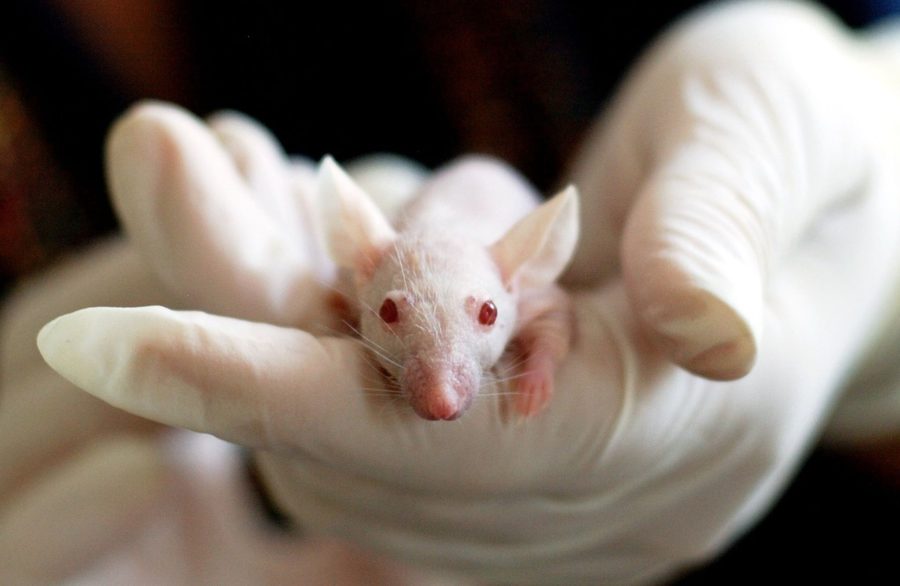The Unethical Nature of Animal Testing
In vivo testing, more commonly known as animal testing, refers to the biological testing of non-human organisms for different uses. Animals are used to biologically test the effect of different cosmetic, medical and cleaning chemicals, etc. In this process, they are exposed to chemicals which harm them, or even bring about death. Over 192 million animals are annually sacrificed for animal testing worldwide.
The most common products made through animal testing are household products, medicines and mostly cosmetics. Although cosmetics made by animal testing were declared illegal from 2009 in Europe, it still takes place because more than 25,000 animals were reported to be abused after the ban. Many animals were, and still are, being sacrificed because of our unnecessary want for cosmetics, new perfumes, soap smells, shampoos and more. The lives that are tortured for these non-essential products include bunnies, monkeys, cats, dogs, mice, and a long list of other innocent creatures.
Experimenters feed chemicals to these animals, conduct surgeries on them, implant wires in their brains, crush certain parts of the body, and much more. After enduring these procedures, animals are then usually put back into a cage without any painkillers. Another horrifying factor to look at is what happens after the experimentation or testing finishes. While some animals may be used again, or sometimes even adopted out, most animals are euthanized. This is usually because certain information, such as organ samples, can only be taken after the animal is dead and the body subjected to further analysis. The process is outraging.
The most important reason for banning animal testing is therefore the unethical nature of the experiments. Animals are held in poor conditions to reduce the cost of keeping them in labs and are misused for human benefit. According to the Animal Legal Defense Fund, only 3% of animals survive testing annually. No animal is rescued from experiment centers without injury, disease, trauma, or some form of addiction. Although proponents of animal testing claim strict regulations prevent animal abuse in testing, these laws are often ignored and violated by laboratories.
For example, when animals are used for product toxicity testing or laboratory research, they are forced through painful and frequently deadly experiments. Two of the most commonly used toxicity tests are the Draize test and the LD50 test, both of which are infamous for the intense pain and suffering they inflict. In the Draize test, a trial substance or product is injected into the eyes of an animal, generally a rabbit. They are then observed for damage done by the injection, mainly in the cornea and other tissues near the eye. This test is very painful for the animal and it often causes scarring, blindness and even death. Therefore, this test has been criticized for being unreliable and a waste of animal life. The second test, the LD50, assesses the dosage of a substance needed to cause death within a certain period of time to fifty percent of the animals who are being tested on. To perform this test, researchers hook the animals up to tubes that pump huge amounts of the test product into their stomachs until they die. Death can take days, or even weeks and according to Orlans, the animals suffer from “vomiting, diarrhea, paralysis, convulsion, and internal bleeding. Since death is the required endpoint, dying animals are not put out of their misery by euthanasia”. Although the use of the Draize and LD50 test has decreased over the past few years, these tests have not been completely eliminated and are still used to test product toxicity. No animal should be lost to such inhumane methods of force feeding and torture in the name of science or cosmetic apparel.
Additionally, numerous scientific organizations, including the Cambridge Quarterly of Healthcare Ethics, have shown animal testing to be highly ineffective. 95% of drugs proven to be safe for animals failed safety trials, and caused severe side effects when tested on humans. Thus, not only does animal testing abuse innocent organisms, but also proves to be in vain. The genetic differences between humans and animals are too large for accurate and safe results, thereby making the whole procedure unnecessary.
By merely looking at the unethical reasoning to experiment on animals, it can already be said that it is inhumane and should be stopped. Knowledge should be acquired with ethical limits, and animal testing exceeds this limit. Not only is animal testing unethical, but it is also mostly ineffective in its justification for existing. The scientific reasonings, as well as solutions and ways to fight against animal testing is further expanded and illustrated on in our student-made magazine called “In Vivo”: https://online.fliphtml5.com/yexde/eemk/index.html#p=1. Here, we argue against animal testing with logical explanations and facts such as the fact that “95% of drugs proven to be safe for animals failed safety trials, and caused severe side effects when tested on humans”. To educate yourself on the urgent global issue of the horrifying acts of animal testing, please do not hesitate to read In Vivo!






